A College Degree Isn’t The Only Path Left To A Good Job
Getting a decent job when you don’t have a BA is getting harder, it’s true–chiefly because of a loss of employment at factories. Since 1991, 2.5 million “good jobs” have disappeared from manufacturing plants, chiefly through automation and offshoring (and Trump would say: unbalanced trade relations).
But to earn a decent amount of money, you don’t have to have a college degree. There are 30 million positions that don’t require a BA in the U.S. currently offering at least $55,000 a year on average, compared with 36 million positions paying the same money for people with college qualifications. By income, in fact, the bottom quarter of BA holders earn no more than median workers with only high school completion, the New York Fed says.
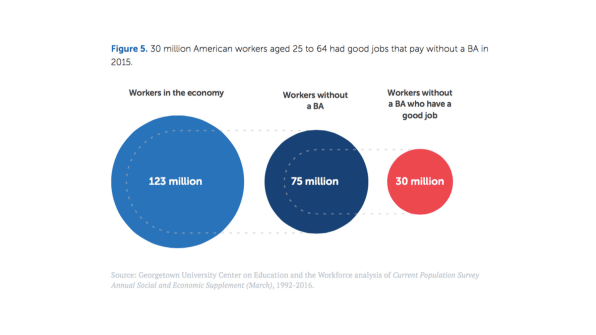
“There are still jobs you can get and more than one way to a secure middle-class life,” says Chauncy Lennon, head of workforce initiatives at JPMorgan Chase. “The BA-or-bust mentality that we often take makes it hard to see that. It’s not as bad as you think, even if we’re not going back to how it was.”
The numbers come from new research from Georgetown University’s Center on Education and the Workforce (CEW), with JPMorgan funding the work. It shows which fields have what the report calls “good jobs”–defined as full-time with pay of at least $55,000 on average–and where they might be found. Working out at about $17 an hour, that level is “consistent with living wage levels,” the researchers say.
Plenty of people worry that automation could take away millions more jobs in the future, leading to large-scale technological unemployment. But it hasn’t happened so far, according to the research. Rather, those manufacturing roles have been transferred into service positions, particularly in health care, hospitality, finance, and business services. Since 1992, about 4 million jobs have been created (net) in service industries. At the same time, 2.5 million of these “good jobs” were lost in manufacturing and 500,000 more in fields like logistics and transport.
Big states like California, Texas, and Florida have the greatest number of non-BA jobs, while Wyoming, New Jersey, and Maryland have the highest share as a percentage of their working population. About half of Wyoming’s good jobs are available to workers without BAs.
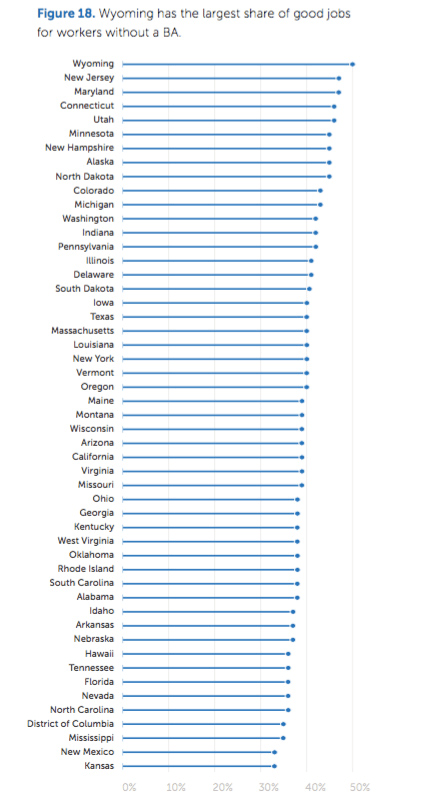
But it’s not like you don’t need skills to get a good non-BA job. Many require specialized knowledge and experience. “With many of these jobs, if you don’t know someone who does it, you may not know they exist,” Lennon says. They include radiologists, pharmacy assistants, phlebotomist (blood workers), precision machinists, and workers with applied engineering ability.
“There are good jobs in manufacturing but you’re not going to get them the way your grandfather did. You’re going to need to go to high school and do some postsecondary education and certification,” Lennon tells Fast Company. (The report doesn’t discuss the cost of this, but suffice it to say, it still requires quite a bit of financial freedom that many don’t have).
Trump has tended to blame trade for the loss of manufacturing and pushed policies that address perceived imbalances: like raising tariffs on certain imports (like on solar panels) and killing the Trans-Pacific Partnership agreement. But Lennon argues that the loss of manufacturing is more related to technology than the World Trade Organization and that Trump is unlikely to be able to turn back the clock. Technology has made many businesses more efficient–from offices that no longer require receptionists; to factories that no longer need foremen–meaning they simply require fewer people. Human services, including health care, wellness, and business support, and manufacturing that exploits technology rather than resists it, are likely to produce more jobs.
Instead, Lennon suggests people look at where the opportunities are. This fall, CEW and JPMorgan are releasing a Good Jobs Index with more information and maps to help people prepare for accelerated change in the labor market. “Whether you live some place with plenty of jobs or some place where jobs are declining, everyone is going to need to invest in their skills,” Lennon says. “We want people to invest in the best places and know what that investment will produce for them.”
Many of the blue-collar jobs that guaranteed a path to financial success have disappeared from the economy, but they do still exist.
Getting a decent job when you don’t have a BA is getting harder, it’s true–chiefly because of a loss of employment at factories. Since 1991, 2.5 million “good jobs” have disappeared from manufacturing plants, chiefly through automation and offshoring (and Trump would say: unbalanced trade relations).
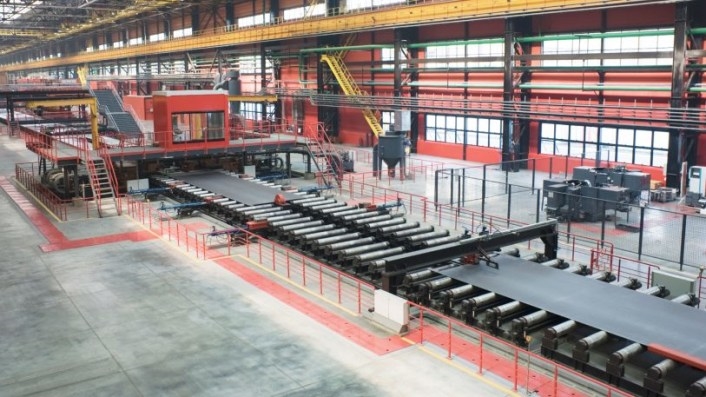
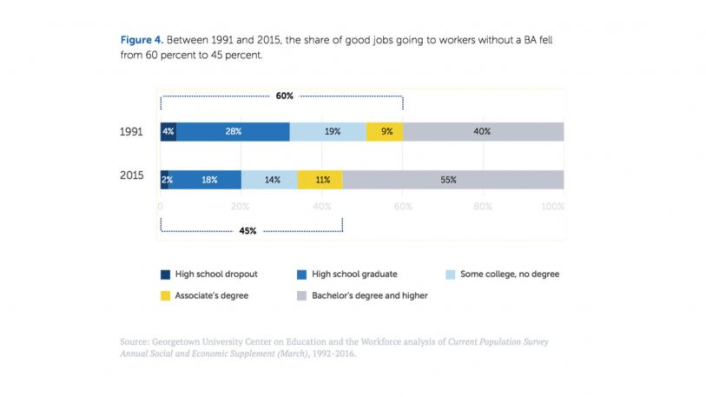
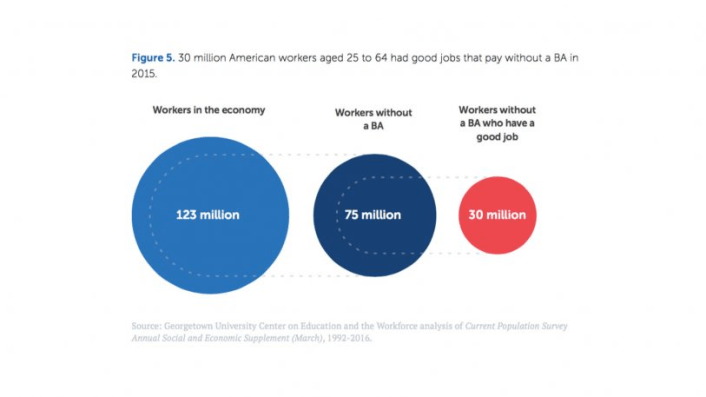
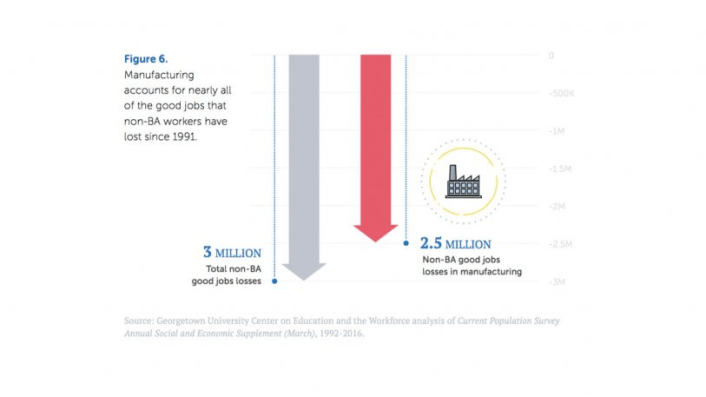
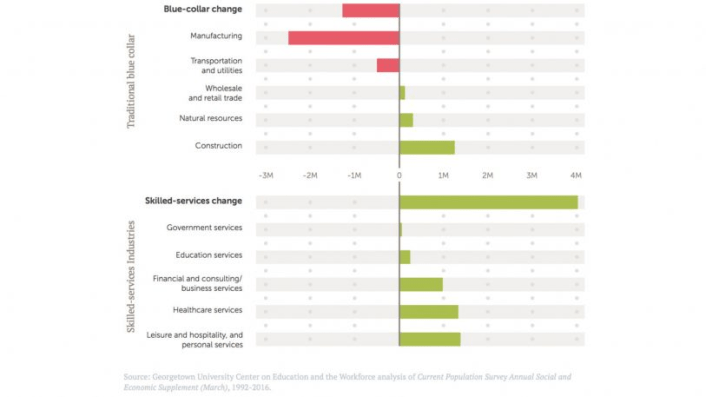
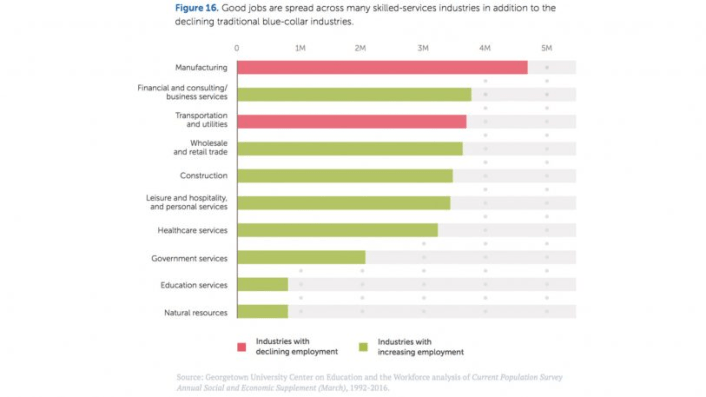

Fast Company , Read Full Story
(30)












